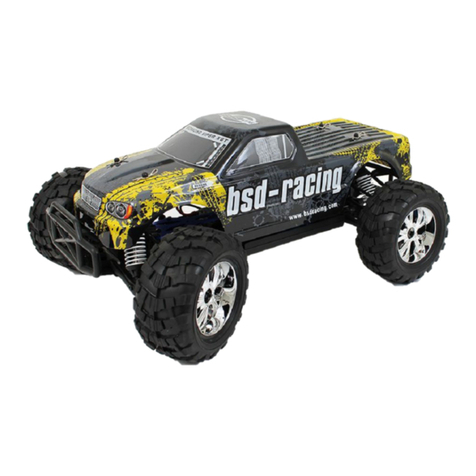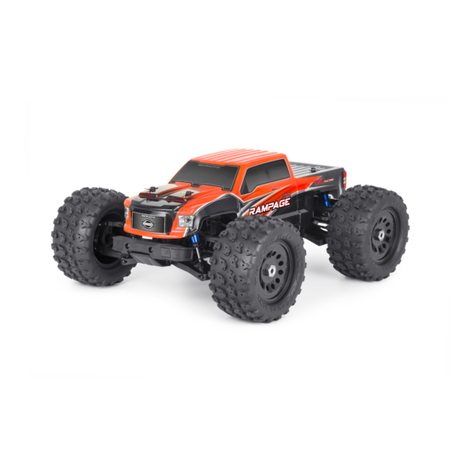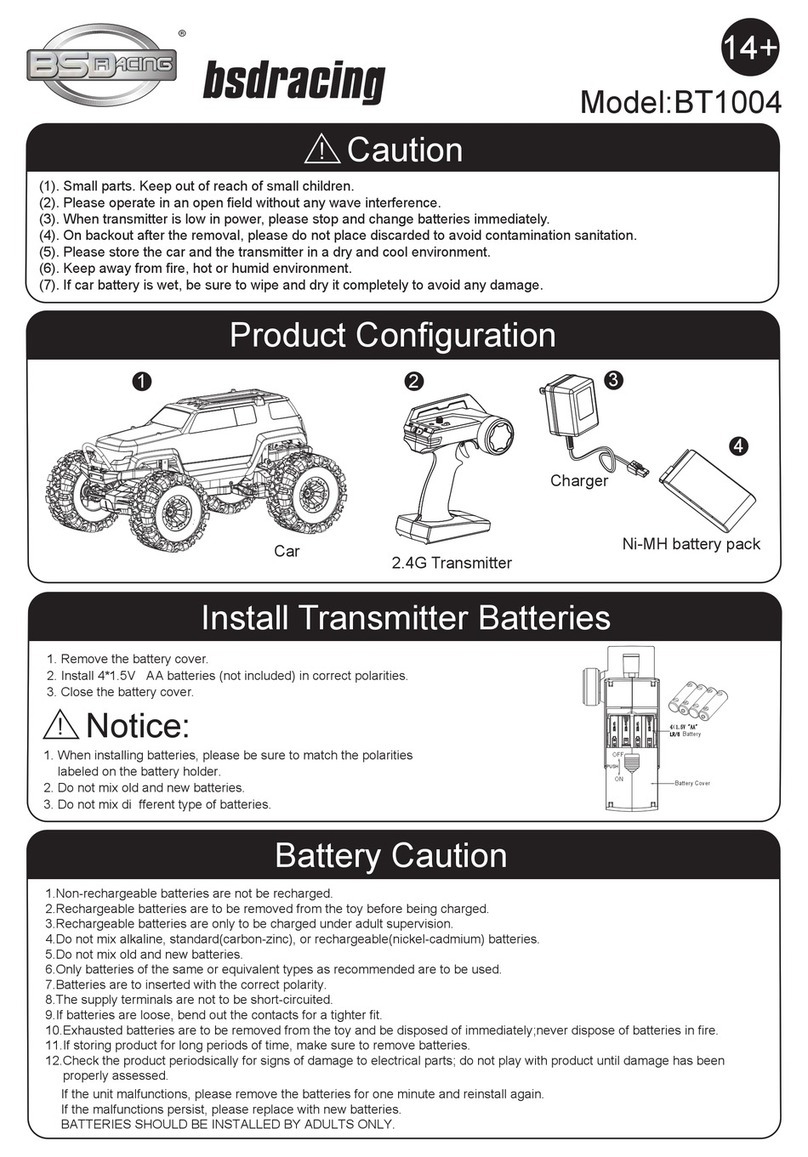PARTS LIST
Item No. Description
BS905-001 Rear chassis 1pcs
BS905-003 Tail wing mount 1pcs
BS905-004 Rollcage post set
BS905-006 Tail wing 1pcs
BS905-008 Body front mount/screw
BS903-003 Shock absorber unit(plastic) 2pcs
BS903-004 Shock absorber unit(alum.) 2pcs
BS903-005 Brace 1pcs
BS903-007 Body pin 6pcs
BS903-008 Upper susp. Arm set
BS903-009 Fr.bumper 1pc
BS903-010 Suspension arm mount block 2pcs
BS903-011 Upper susp.arm mount-Fr/Rr
BS903-014 Ball bearing(6*12*4) 2pcs
BS903-015 Fr/Rr steering arm
BS903-016 Ball bearing(10*15*4) 2pcs
BS903-017 Fr/Rr C-carrier
BS903-018 Fr.lower susp.arm-Lf/Rt
BS903-019 Transverse driver shaft set
BS903-020 Diff.gearbox unit
BS903-021 Anti-roll bar set
BS903-023 O-washer 4pcs
BS903-024 Front suspension arm pin-short 4pcs
BS903-025 Suspension arm pin-long 4pcs
BS903-026 Fr.chassis
BS903-028 Lower susp.mount block-Fr/Rr
BS903-029 Anti-roll bar fixation set
BS903-030 Steering linkage set 2pcs
BS903-031 Servo saver unit
BS903-032 Upper deck-Fr
BS903-033 Battery case 1pcs
BS903-034 Switch 1pcs
BS903-035 Receiver/battery case cover
BS903-036 Rear aluminum shocks 2pcs
BS903-037 Steering servo horn linkage lset
BS903-038 Steering servo mount-A/B
BS903-039 Upper deck-centre 1pcs
BS903-040 Upper deck mount 1pcs
Item No. Description
BS903-043 Side guard plate-L/R
BS903-044 Throttle servo mount-A/B
BS903-048 Throttle linkage set
BS903-052 Clutch show w/spring
BS903-058 Hub rear carrier
BS903-059 Rr.lower susp.arm-L /R
BS903-060 Fuel pipe & hoop
BS903-061 Rear suspension arm pin-short
BS903-065 TPF2.6*10 flat cross screw 12pcs
BS903-066 TPF3*8 flat cross screw 12pcs
BS903-067 TPF3*10 flat cross screw 12pcs
BS903-068 TPF3*14 flat cross screw 12pcs
BS903-069 TPF3*16 flat cross screw 12pcs
BS903-070 ISO3*10 flat cross screw 12pcs
BS903-071 BT2.6*6 B-head cross screw 12pcs
BS903-072 BT3*8 B-head cross screw 12pcs
BS903-073 BT3*12 B-head cross screw 12pcs
BS903-074 BT3*14 B-head cross screw 12pcs
BS903-075 BT3*16 B-head cross screw 12pcs
BS903-076 BT3*20 B-head cross screw 12pcs
BS903-077 BT2.6*10 B-head cross screw12pcs
BS903-078 BT4*8 B-head cross screw 12pcs
BS903-079 BM3*10 B-head cross screw 12pcs
BS903-080 HM3*25 Cap head hexagon
screw 6pcs
BS903-081 HM3*10 Cap head hexagon
screw 6pcs
BS903-084 Battery pack 6V NI-MH 1pcs
BS903-085 Exhaust fixation set
BS903-086 Ball bearing (5*10*4) 2pcs
BS903-087 Ball bearing (12*18*4) 2pcs
BS903-088 E -clip (4*0.6) 12pcs
BS903-089 Pin (2*9.5) 12pcs
BS903-090 Pin (2*12.5) 12pcs
BS903-091 Washer A (5.2*10*0.2) 12pcs
BS903-092 Washer B (4.2*8*0.2) 12pcs
BS903-093 M4 nylon self-lock nut 6pcs
BS903-094 Double way ball end 6pcs
9































